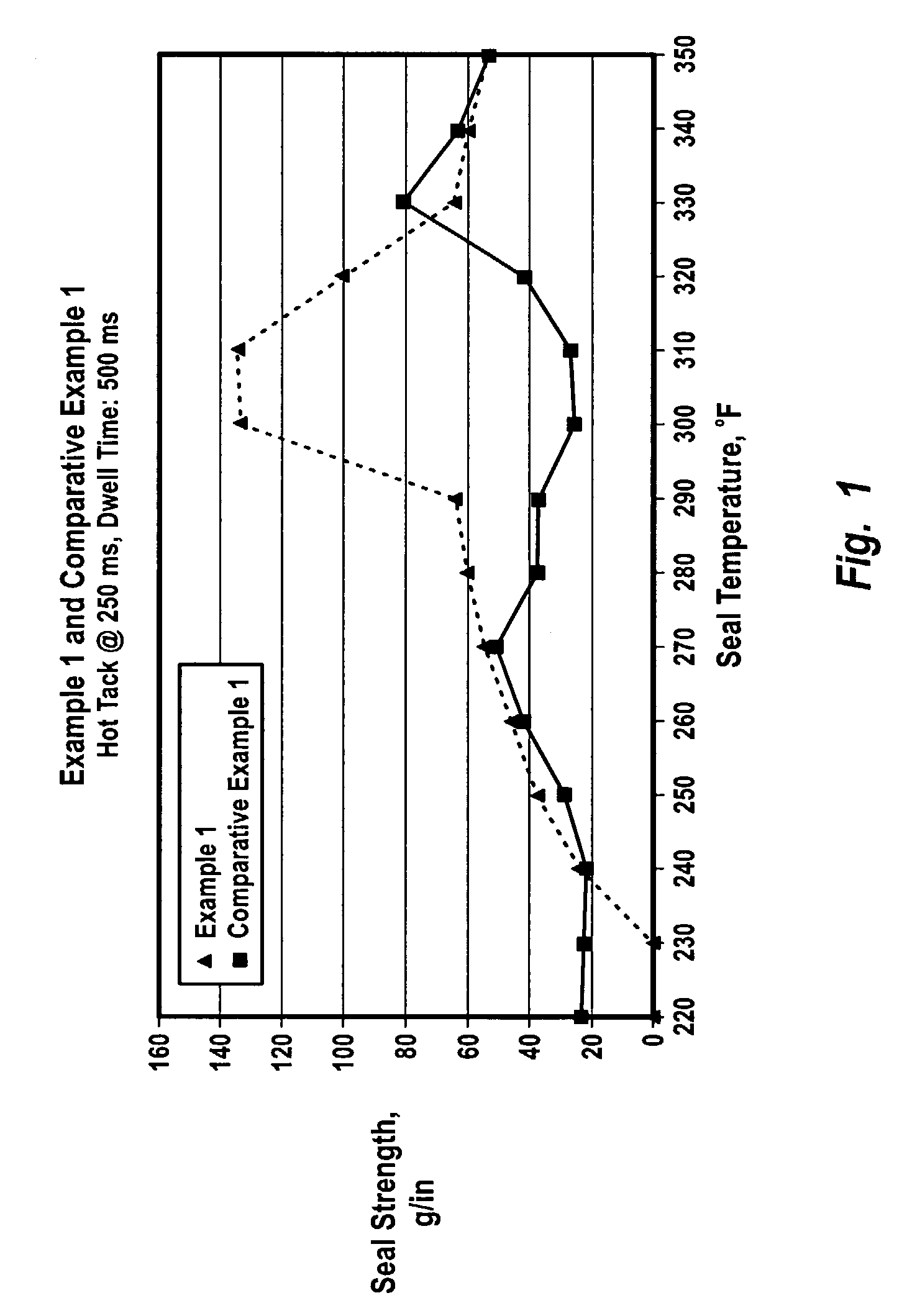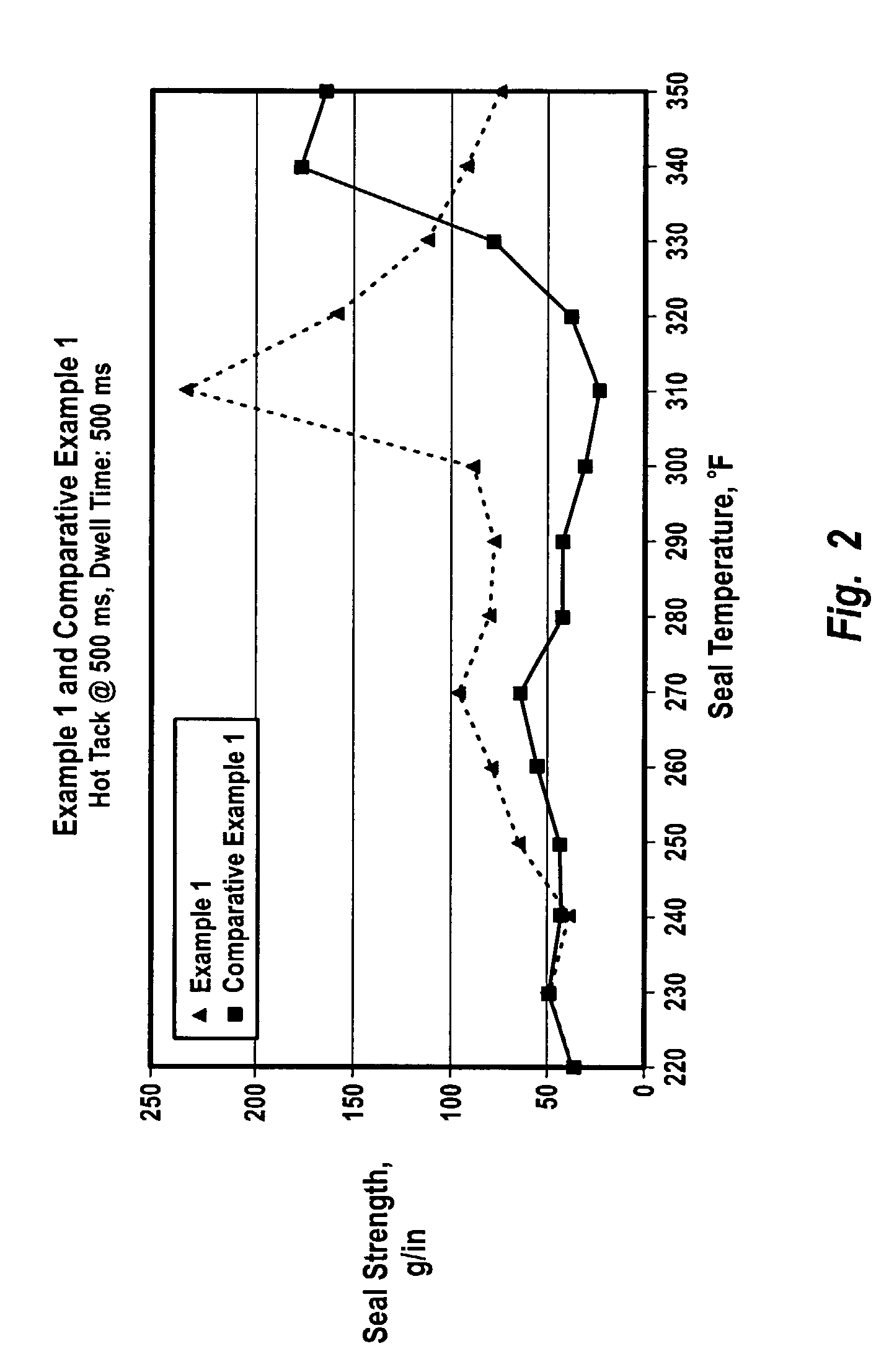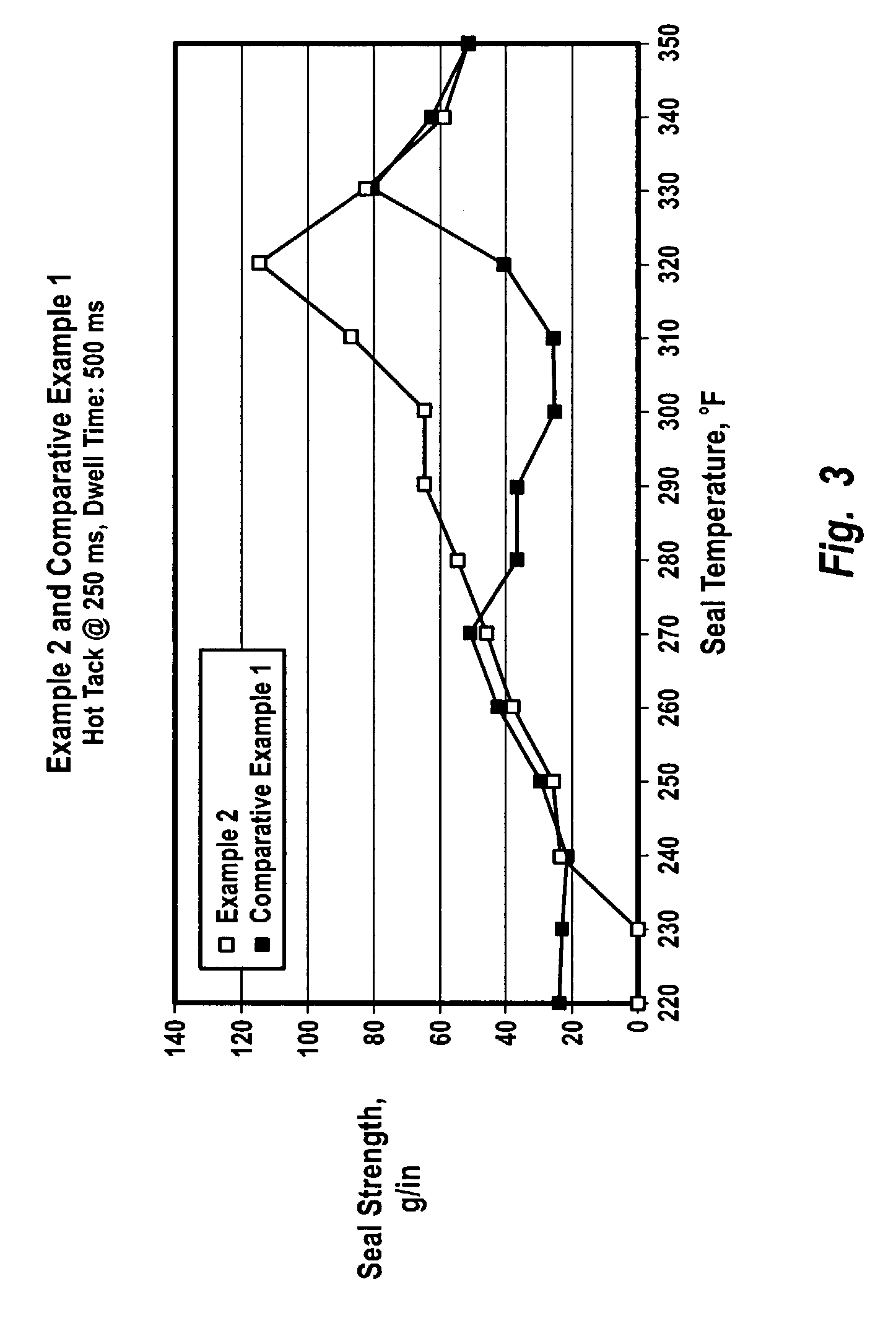Heat sealable polyvinyl chloride films
- Summary
- Abstract
- Description
- Claims
- Application Information
AI Technical Summary
Benefits of technology
Problems solved by technology
Method used
Image
Examples
example 1
[0053]The sample films of Example 1 comprise: 54.84% by weight PVC, 12.46% by weight PVC / VA, and 28.27% by weight plasticizer. The films of Example 1 further comprise minor amounts of additives: 1.47% by weight stabilizer, 2.02% by weight antifog, 0.24% by weight slip, 0.1% by weight lubricant, 0.17% by weight slip, and 0.44% by weight antiblock.
[0054]A film of Example 1 was formed with a gauge of 1 mil. The film was tested for OTR and for heat sealing characteristics. The film had an OTR of 1025.9 cc / 100 in2 / 24 hours. The film formed a welded seal, beginning at a temperature of 328° F. and a burn through temperature of 421° F., providing a 93° F. heat sealing window.
example 2
[0062]The sample films of Example 2 comprise: 54.92% by weight PVC; 12.48% PVC / VA; and 28.31% by weight plasticizer. The sample films further comprise minor amounts of additives: 1.47% by weight of stabilizer; 2.02% by weight antifog; 0.33% by weight slip; 0.17% by weight lubricant; and 0.30% by weight antiblock.
[0063]A film of Example 2 was formed with a gauge of 1 mil. The film was tested for OTR and for heat sealing characteristics. The film had an OTR of 904 cc / 100 in 2 / 24 hours. The film formed a welded seal beginning at a temperature of 313° F. and a burn through temperature of 398° F., providing an 85° F. heat sealing window.
[0064]Three samples of Example 2 were tested for hot tack seal strength. The data from this testing is shown in Tables E–F.
[0065]FIG. 3 is a graph of the hot tack heat seal data 250 ms following sealing as shown in Table E (Example 2) and Table C (Comparative Example 1). FIG. 4 is a graph of hot tack heat seal 500 ms following sealing, as shown in Table F...
examples 2 – 3
Examples 2–3
[0069]Sample films of Examples 2 and 3 were formed by the steps described above. Example 2 sample films comprise the composition disclosed above. Example 3 sample films comprise: 61.16% by weight PVC, 6.24% PVC / VA, 28.31% by weight plasticizer. The films of Example 3 further comprise minor amounts of additives: 1.48% by weight stabilizer, 2.02% by weight stabilizer, 0.33% by weight slip, 0.17% by weight lubricant, and 0.30% by weight antiblock.
[0070]A film of Example 3 was formed with a gauge of 1 mil. The film was tested for OTR and for heat sealing characteristics. The film had a OTR of 818.8 cc / 100 in2 / 24 hours. The film formed a welded seal, beginning at a temperature of 3560 and a burn through temperature of 416°, providing a 60° F. heat sealing window.
[0071]Table E above and Table G below show hot tack heat seal strengths for Examples 2 and 3 over different sealing temperatures, measured 250 milliseconds following heat sealing. Table F above and Table H, below show...
PUM
| Property | Measurement | Unit |
|---|---|---|
| Temperature | aaaaa | aaaaa |
| Temperature | aaaaa | aaaaa |
| Temperature | aaaaa | aaaaa |
Abstract
Description
Claims
Application Information
 Login to view more
Login to view more - R&D Engineer
- R&D Manager
- IP Professional
- Industry Leading Data Capabilities
- Powerful AI technology
- Patent DNA Extraction
Browse by: Latest US Patents, China's latest patents, Technical Efficacy Thesaurus, Application Domain, Technology Topic.
© 2024 PatSnap. All rights reserved.Legal|Privacy policy|Modern Slavery Act Transparency Statement|Sitemap



